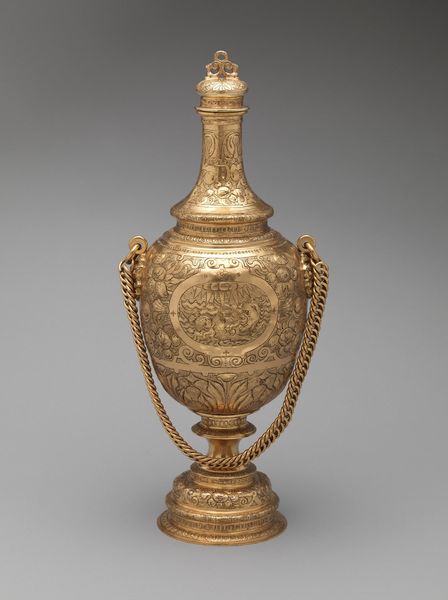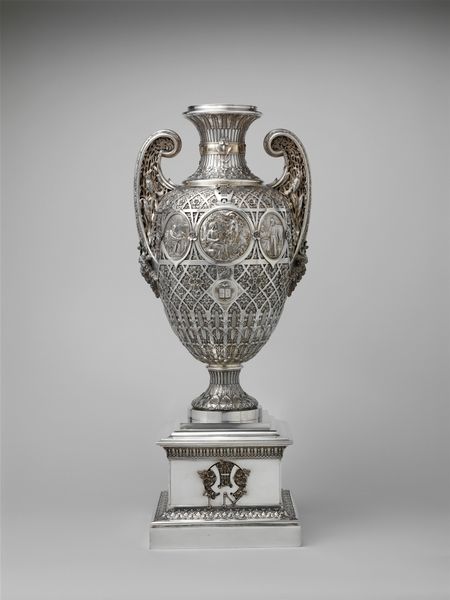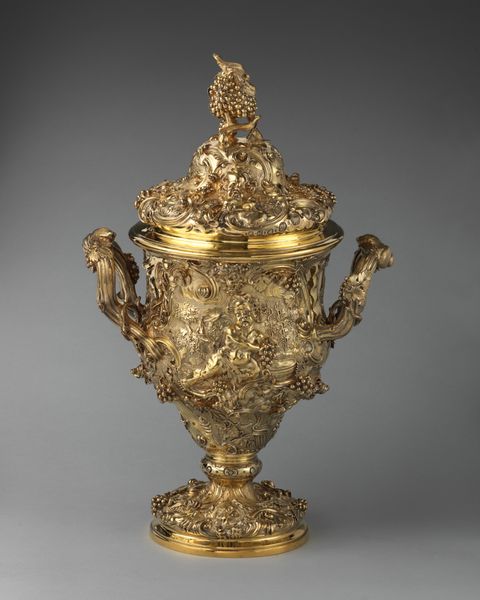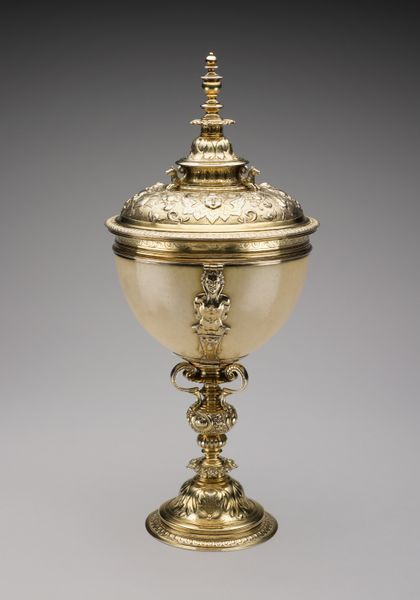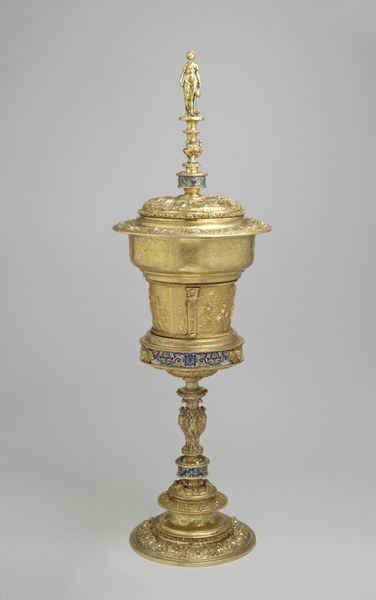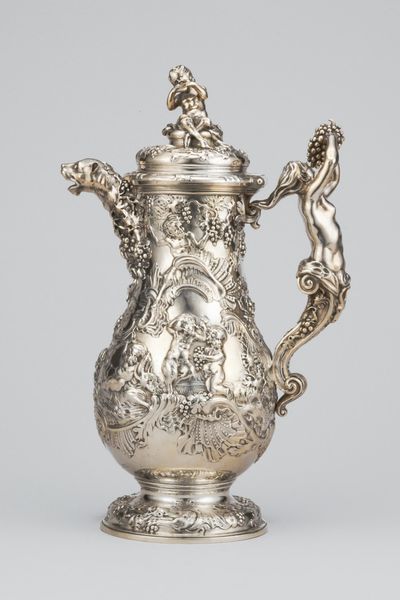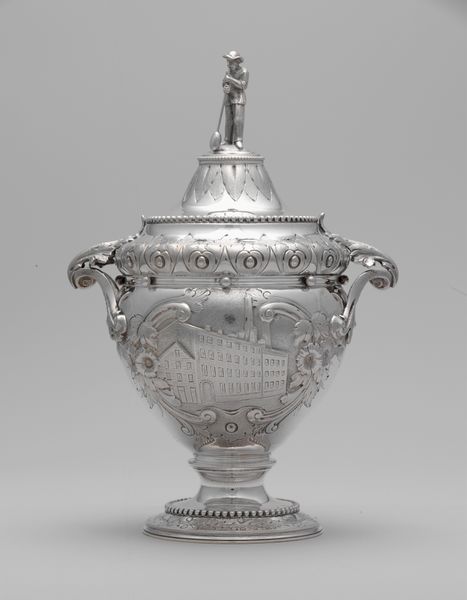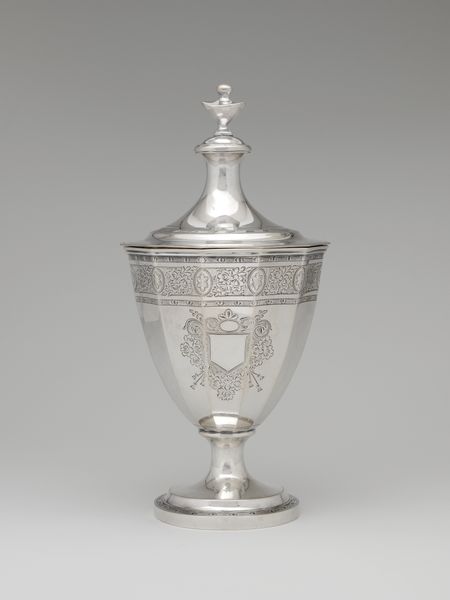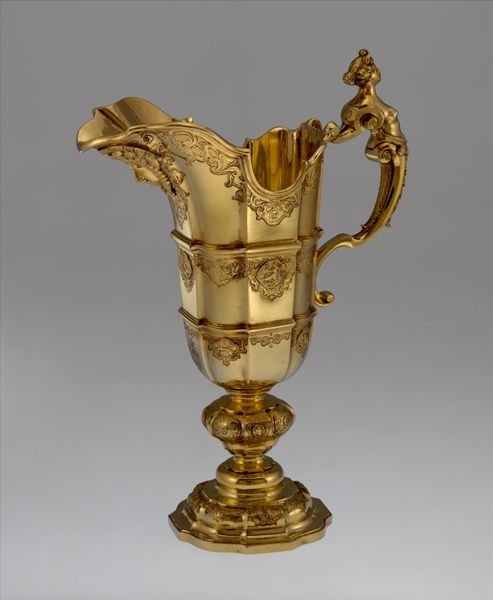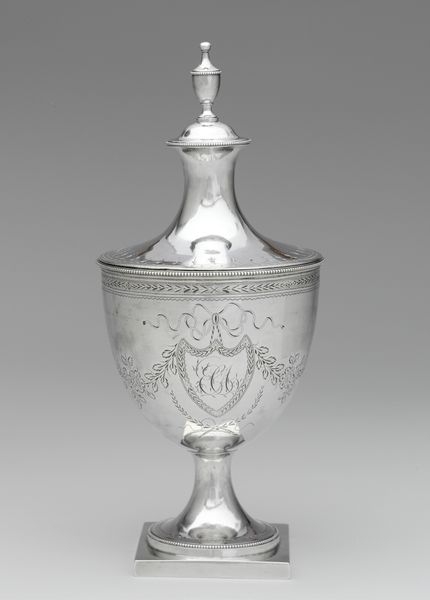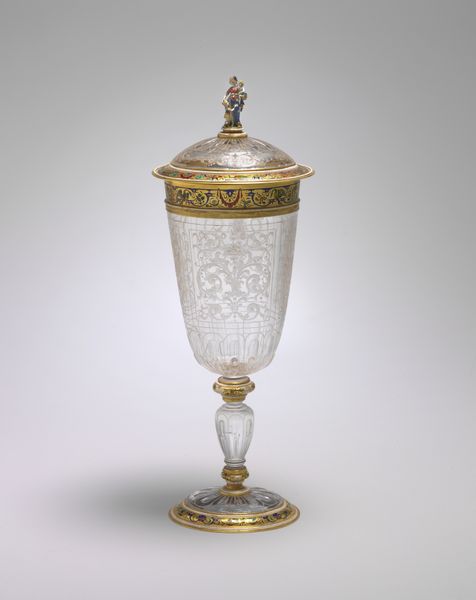
carving, silver, sculpture, wood
#
carving
#
silver
#
11_renaissance
#
sculpture
#
wood
#
decorative-art
Dimensions: wt. confirmed: 10 7/8 × 3 7/8 in., 22.926oz. (27.6 × 9.8 cm, 650g)
Copyright: Public Domain
Curator: Good morning, and welcome. Today, we’re looking at a remarkable piece called “Cup with Cover,” crafted by Hans van Amsterdam sometime between 1533 and 1534. It resides here at the Metropolitan Museum of Art. Editor: What strikes me first is the sheer opulence of it. The silver positively gleams, contrasting so vividly with the darker body of the cup. It evokes a sense of royal ceremony. Curator: Indeed. What’s fascinating is the combination of materials. We see silver meticulously worked for the stand and lid, contrasted with what appears to be a carved wooden body. This melding of techniques is quite characteristic of the period, pointing to specific workshops known for their mixed-media expertise. It blurs lines, doesn't it? Challenging conventional art historical separation between high art and what some might categorize as mere craftsmanship. Editor: Absolutely. And think about the cultural context. The level of detail here isn’t just aesthetic. The imagery is a narrative—I can make out scenes that might reference biblical stories. These pieces would have served as incredibly potent signifiers of status and power, particularly within court circles. Who might have commissioned this? Curator: The commissioner was most likely someone of considerable wealth and influence; possibly even someone within a royal family given the expense of precious materials. This would be commissioned not just to drink from, but a public performance of wealth to legitimize and assert dominance, a visual manifestation of dynastic claims, as the scenes reference power, order and morality. The choice of narrative scenes also aligns it with broader socio-political expectations of the time, which museums, like our very own, plays a part in displaying and preserving these ideals. Editor: And looking at the labour involved! Someone would have not just mined this, worked and carved this material. Consider the distribution networks, too! Where would it have been stored? Who was able to consume this and enjoy it? The work speaks volumes of the economies circulating these trades and workshops and labor. Curator: Precisely. It's easy to become fixated on the finished object, forgetting the whole apparatus behind its creation and initial consumption, of social relations and historical contexts and hierarchies, a window to the distribution of material across the world and social impact during that time. Editor: It shifts how we appreciate this object when you see this for what it truly is. It ceases to be an antiquated craft and instead something very relevant for the modern age, when consumption and craft are evolving in tandem once more. Curator: Well, it's an object with remarkable insight into labor and the display of art during the Renaissance era; a testament to that complex period in history. Editor: I think that brings it alive in a really impactful way.
Comments
No comments
Be the first to comment and join the conversation on the ultimate creative platform.
